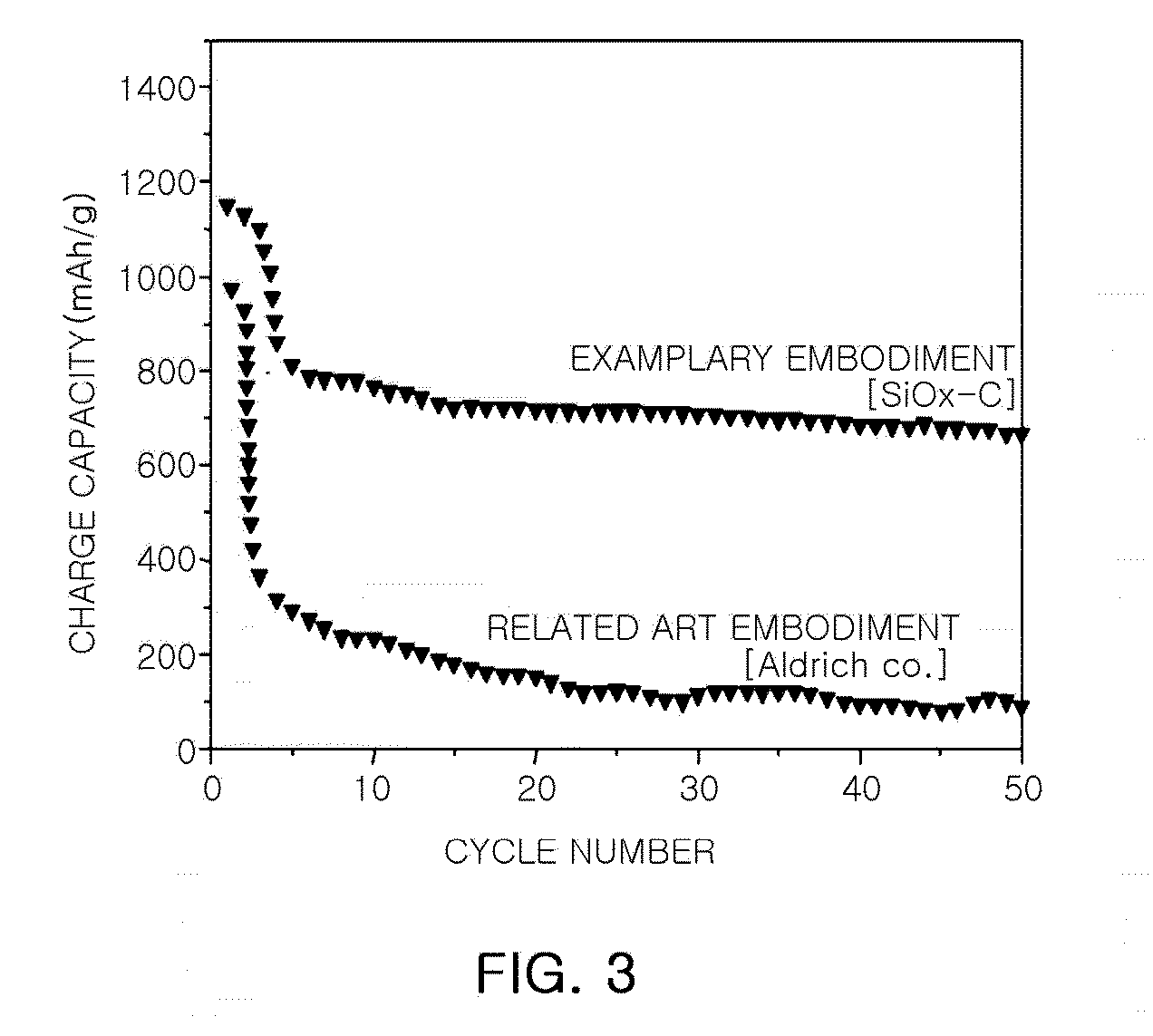Silicon Oxide for Anode of Secondary Battery, Method for Preparing the Same and Anode of Secondary Battery Using the Same
- Summary
- Abstract
- Description
- Claims
- Application Information
AI Technical Summary
Benefits of technology
Problems solved by technology
Method used
Image
Examples
example 1
[0046]A SiCl4 solution having a purity of 97% was mixed with ethylene glycol, followed by stirring. The stirring was conducted at a temperature of 50° C. to 100° C. for 12 hours to form a gel. The gel thus formed was heat treated under a hydrogen atmosphere at a temperature of 800° C. for 2 hours to manufacture silicon oxide.
[0047]During mixing, the SiCl4 solution and ethylene glycol were mixed at ratios of 30:70, 50:50 and 70:30 by volume. The silicon oxides thus prepared were observed, and photographic images thereof are provided in FIGS. 1A, 1B and 1C. As shown in FIGS. 1A, 1B and 1C, silicon oxide prepared by the method of the present invention has minute crystals having a size of 10 to 150 nm. Through the results, it was seen that defects including exfoliation due to the increase of volume and the lifetime decrease of a battery, exhibited in a Si-based anode material of related art, could be solved.
example 2
[0048]500 mL of a SiCl4 solution having a purity of 97% and 500 mL of ethylene glycol (50:50 by volume ratio) were prepared, and silicon oxide was prepared by undertaking the same procedure as described in Example 1.
[0049]By using the silicon oxide thus prepared, a SiOx-C complex phase was manufactured. To manufacture the SiOx-C complex phase, SiOx:carbon pitch were mixed at a ratio of 100:20 by weight. The mixture was inserted into a wide-mouth bottle with 10 numbers of zirconia balls (5 mm). Low energy ball milling was conducted at a rate of 100 rpm for 12 hours. Then, the resultant mixture was inserted into a crucible, and the crucible was inserted into an electric furnace. Under an Ar gas atmosphere, the temperature was increased by 5 degrees per minute to 900° C., was maintained at 900° C. for 1 hour and was then decreased by 5 degrees per minute to produce a final complex phase.
[0050]The SiOx-C complex phase thus manufactured was observed, and a photographic image thereof is i...
PUM
| Property | Measurement | Unit |
|---|---|---|
| Temperature | aaaaa | aaaaa |
| Temperature | aaaaa | aaaaa |
| Temperature | aaaaa | aaaaa |
Abstract
Description
Claims
Application Information
 Login to View More
Login to View More - R&D
- Intellectual Property
- Life Sciences
- Materials
- Tech Scout
- Unparalleled Data Quality
- Higher Quality Content
- 60% Fewer Hallucinations
Browse by: Latest US Patents, China's latest patents, Technical Efficacy Thesaurus, Application Domain, Technology Topic, Popular Technical Reports.
© 2025 PatSnap. All rights reserved.Legal|Privacy policy|Modern Slavery Act Transparency Statement|Sitemap|About US| Contact US: help@patsnap.com


